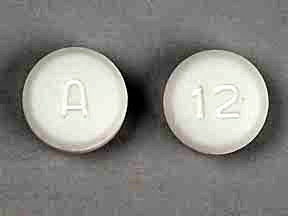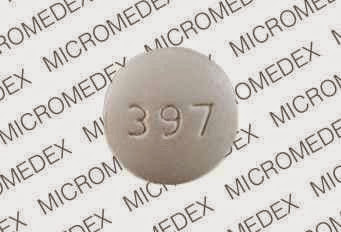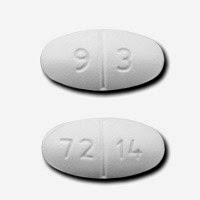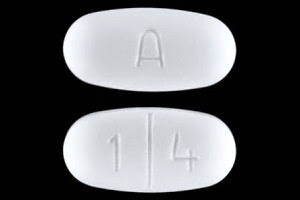METFORMIN AND REPAGLINIDE
(met FOR min and re PAG li nide) Brand: PrandiMet









What is the most significant information I must know about metformin and repaglinide?
• You must not use this medicine if you are allergic to metformin (Glucophage) or repaglinide (Prandin), if you have kidney malady or type 1 diabetes, or if you are in a state of diabetic ketoacidosis (call your doctor for treatment with insulin).
• You must not use metformin and repaglinide together with gemfibrozil (Lopid) or NPH insulin (such as isophane insulin).
• If you need to have any type of x-ray or CT scan using a paint that is injected into your veins, you will need to temporarily stop taking metformin and repaglinide.
• Some people develop lactic acidosis while taking metformin. Early symptoms may get worse over time and this condition can be fatal. Get abnormal medical help if you have even mild symptoms such as: muscle pain or weakness, numb or cool feeling in your arms and legs, trouble breathing, stomach pain, nausea with vomiting, slow or uneven heart course, dizziness, or feeling very weak or tired.
• Take care not to allow your blood sugar get too low. Low blood sugar (hypoglycemia) can occur if you skip a meal, exercice too long, drink alcohol, or are under stress. Symptoms include headache, famine, weakness, sweating, tremors, irritability, or trouble concentrating. Carry heavy candy or glucose tablets with you in case you have low blood sugar. Another sugar sources include orange juice and milk. Be certain your family and close friends know how to help you in an emergency.
What is metformin and repaglinide?
• Metformin and repaglinide are oral diabetes medications that help control blood sugar levels. Repaglinide works by causing the pancreas to manufacture insulin. Metformin works by decreasing glucose (sugar) manufacture in the liver and decreasing absorption of glucose by the intestines.
• The combination of metformin and repaglinide is used together with diet and exercice to treat type 2 diabetes.
• Metformin and repaglinide may also be used for another purposes not listed in this medicine guide.
What must I discuss with my doctor till taking metformin and repaglinide?
• Some people develop a life-threatening condition called lactic acidosis while taking metformin. You may be more likely to develop lactic acidosis if you have liver or kidney malady, congestive heart failure, a severe infection, if you are dehydrated, or if you drink big amounts of alcohol. Conversation with your doctor about your individual risk.
• You must not use this medicine if you are allergic to metformin (Glucophage) or repaglinide (Prandin), or if you have:
· type 1 diabetes;
· kidney disease;
· if you also use gemfibrozil (Lopid) or NPH insulin (such as isophane insulin); or
· if you are in a state of diabetic ketoacidosis (call your doctor for treatment with insulin).
• If you need to have any type of x-ray or CT scan using a paint that is injected into your veins, you will need to temporarily stop taking metformin and repaglinide.
• To create certain you can safely take this medicine, speak your doctor if you have any of these another conditions:
· liver malady; or
· a history of heart disease.
• FDA pregnancy category C. It is not known whether metformin and repaglinide will harm an unborn child. Speak your doctor if you are pregnant or plan to become pregnant while using this medication..
• It is not known whether metformin and repaglinide passes into breast milk or if it could harm a nursing child. You must not breast-feed while using metformin and repaglinide.
How must I take metformin and repaglinide?
• Take exactly as predesigned by your doctor. Do not take in larger or less amounts or for longer than recommended. Follow the directions on your prescription label. Your doctor may occasionally change your doze to create certain you get the excellent results.
• Metformin and repaglinide is generally taken 2 or 3 times daily, within 15 minutes till eating a meal. Follow your doctor's instructions. If you skip a meal, do not take your doze of metformin and repaglinide. Wait before your following meal.
• Your blood sugar will need to be checked often, and you may need another blood trials at your doctor's office. Visit your doctor regularly.
• Know the signs of low blood sugar (hypoglycemia) and how to recognize them: headache, famine, weakness, sweating, tremors, irritability, or trouble concentrating.
• Always hold a source of sugar accessible in case you have symptoms of low blood sugar. Sugar sources include orange juice, glucose gel, candy, or milk. If you have severe hypoglycemia and can't ate or drink, use an injection of glucagon. Your doctor can give you a prescription for a glucagon abnormal injection kit and speak you how to give the injection.
• Check your blood sugar carefully during a time of stress or diseases, if you travel, exercice more than normal, drink alcohol, or skip meals. These things can affect your glucose levels and your doze needs may also change.
• Your doctor may want you to stop taking this medicine for a short time if you become ill, have a fever or infection, or if you have surgery or a medical abnormal. Ask your doctor how to adjust your doze if needed. Do not change your medicine doze or schedule without your doctor's advice.
• Your doctor may have you take extra vitamin B12 while you are taking metformin and repaglinide. Take only the amount of vitamin B12 that your doctor has prescribed.
• Store at room temperature away from moisture, heat, and light.
What happens if I miss a dose?
• Take the missed doze as soon as you remember, but only if you are getting ready to ate a meal. Skip the missed doze if it is nearly time for your following scheduled doze. Do not take extra medication to create up the missed dose.
What happens if I overdose?
• Search abnormal medical attention or call the Poison Help line at 1-800-222-1222. A metformin and repaglinide overdose can reason life-threatening hypoglycemia. Symptoms of severe hypoglycemia include extreme weakness, blurred vision, sweating, trouble speaking, tremors, stomach pain, confusion, and seizure (convulsions).
• Overdose may also reason a life-threatening condition called lactic acidosis. Get abnormal medical help if you have any of these symptoms of lactic acidosis: weakness, increasing sleepiness, slow heart course, cool feeling, muscle pain, shortness of breath, stomach pain, feeling light-headed, and fainting.
What must I avoid while taking metformin and repaglinide?
• Avoid drinking alcohol. It lowers blood sugar and may magnify your risk of lactic acidosis while taking metformin and repaglinide.
What are the possible side effects of metformin and repaglinide?
• Get abnormal medical help if you have any of these signs of an allergic reaction: hives; difficult breathing; swelling of your person, lips, tongue, or throat.
• Hypoglycemia, or low blood sugar, is the most general side effect of metformin and repaglinide. Symptoms include headache, famine, weakness, sweating, tremors, irritability, trouble concentrating, rapid breathing, quick heartbeat, fainting, or seizure (severe hypoglycemia can be fatal). Carry heavy candy or glucose tablets with you in case you have low blood sugar.
• This medicine may reason lactic acidosis (a build-up of lactic acid in the body, which can be fatal). Lactic acidosis can start slowly and get worse over time. Get abnormal medical help if you have even mild symptoms of lactic acidosis, such as: muscle pain or weakness, numb or cool feeling in your arms and legs, trouble breathing, stomach pain, nausea with vomiting, slow or uneven heart course, dizziness, or feeling very weak or tired.
• Smaller serious side effects may include:
· headache;
· nausea, diarrhea; or
· runny or stuffy nose, sneezing, cough, or cool symptoms.
• This is not a complete list of side effects and others may occur. Call your doctor for medical advice about side effects. You may message side effects to FDA at 1-800-FDA-1088.
What another drugs will affect metformin and repaglinide?
• Using beta-blockers such as atenolol (Tenormin), carvedilol (Coreg), metoprolol (Lopressor, Toprol), and propranolol (Inderal, InnoPran) can create it harder for you to speak when you have low blood sugar. Speak your doctor if you use any heart or blood pressure medication.
• Speak your doctor about all another medicines you use, especially:
· anastrozole (Arimidex);
· cimetidine (Tagamet) or ranitidine (Zantac);
· conivaptan (Vaprisol);
· cyclosporine (Gengraf, Neoral, Sandimmune);
· deferasirox (Exjade);
· imatinib (Gleevec);
· isoniazid (for treating tuberculosis);
· montelukast (Singulair);
· morphine (MS Contin, Kadian, Oramorph);
· nefazodone (an antidepressant);
· quinine (Qualaquin);
· vancomycin (Vancocin);
· an antibiotic such as clarithromycin (Biaxin), erythromycin (E.E.S., EryPed, Ery-Tab, Erythrocin, Pediazole), rifampin (Rifater, Rifadin, Rifamate), or telithromycin (Ketek);
· antifungal medicine such as fluconazole (Diflucan), itraconazole (Sporanox), ketoconazole (Nizoral), miconazole (Oravig), posaconazole (Noxafil), or voriconazole (Vfend);
· cholesterol-lowering medicine such as ezetimibe (Vytorin, Zetia) or gemfibrozil (Lopid);
· a diuretic (water pill), such as amiloride (Midamor), furosemide (Lasix), or triamterene (Dyrenium);
· heart or blood pressure medicine such as digoxin (digitalis, Lanoxin), nicardipine (Cardene), nifedipine (Nifedical, Procardia), procainamide (Procan, Procanbid, Pronestyl), or quinidine (Quin-G);
· the hepatitis C medications boceprevir (Victrelis) or telaprevir (Incivek);
· HIV/AIDS medicine such as atazanavir (Reyataz), delavirdine (Rescriptor), fosamprenavir (Lexiva), indinavir (Crixivan), nelfinavir (Viracept), ritonavir (Norvir, Kaletra), or saquinavir (Invirase);
· a non-steroidal anti-inflammatory drug (NSAID) such as flurbiprofen (Ansaid), ibuprofen (Advil, Motrin), indomethacin (Indocin), mefenamic acid (Ponstel), or piroxicam (Feldene);
· another diabetes medications such as pioglitazone (Actos, Duetact, Actoplus Met) or tolbutamide (Orinase); or
· a sulfa drug, such as sulfisoxazole (Pediazole, and others) or trimethoprim (Bactrim, Primsol, Proloprim, Septra, Cotrim).
• This list is not complete and another drugs may interact with metformin and repaglinide. Speak your doctor about all medications you use. This includes prescription, over-the-counter, vitamin, and herbal commodity. Do not start a new medicine without telling your doctor.
Where can I get more information?
• Your pharmacist can provide more information about metformin and repaglinide.
Remember, hold this and all another medicines out of the reach of children, never share your medicines with others, and use this medicine only for the indication prescribed.
Disclaim: Each effort has been made to ensure that the information provided by Cerner Multum, Inc. ('Multum') is accurate, up-to-date, and complete, but no guarantee is made to that effect. Drug information contained herein may be time sensitive. Multum information has been compiled for use by healthcare practitioners and consumers in the United States and therefore Multum does not warrant that uses external of the United States are appropriate, unless specifically indicated otherwise. Multum's drug information does not endorse drugs, diagnose patients or recommend therapy. Multum's drug information is an informational resource designed to assist licensed healthcare practitioners in caring for their patients and/or to serve consumers viewing this service as a supplement to, and not a substitute for, the expertise, skill, knowledge and judgment of healthcare practitioners. The absence of a warning for a given drug or drug combination in no way must be construed to indicate that the drug or drug combination is safety, effective or appropriate for any given patient. Multum does not assume any responsibility for any aspect of healthcare administered with the help of information Multum provides. The information contained herein is not intended to cover all possible uses, directions, precautions, warnings, drug interactions, allergic reactions, or adverse effects. If you have questions about the drugs you are taking, check with your doctor, nurse or pharmacist.